As mentioned in my “On Review” article, I’ve always been a big fan of hardtails. I think everyone should have one in their quiver. Riding a hardtail will keep your skills sharp, particularly when it comes to line choice, and from a practical standpoint, they’re easy to maintain.

The modern geometry (long, low, and slack) and clean lines of the Zen TRAIL caught my eye at the North American Handmade Bicycle Show last winter, and it was pretty much love at first sight.
I built the bike up from just the frame and throughout the test, I’ve been swapping out components. Because of this, I’m going to focus mainly on the frame itself. Depending on what components I had on the frame, the complete bike weighed between 26 and 28 pounds. That’s including two water bottle cages, heavy Shimano SLX trail pedals, and burly tires built to withstand abuse. With some fancier carbon bits and lighter tires, you could easily get this bike in the 23-25lb range. The TRAIL frame itself weighs 2330g / 5.14lbs.
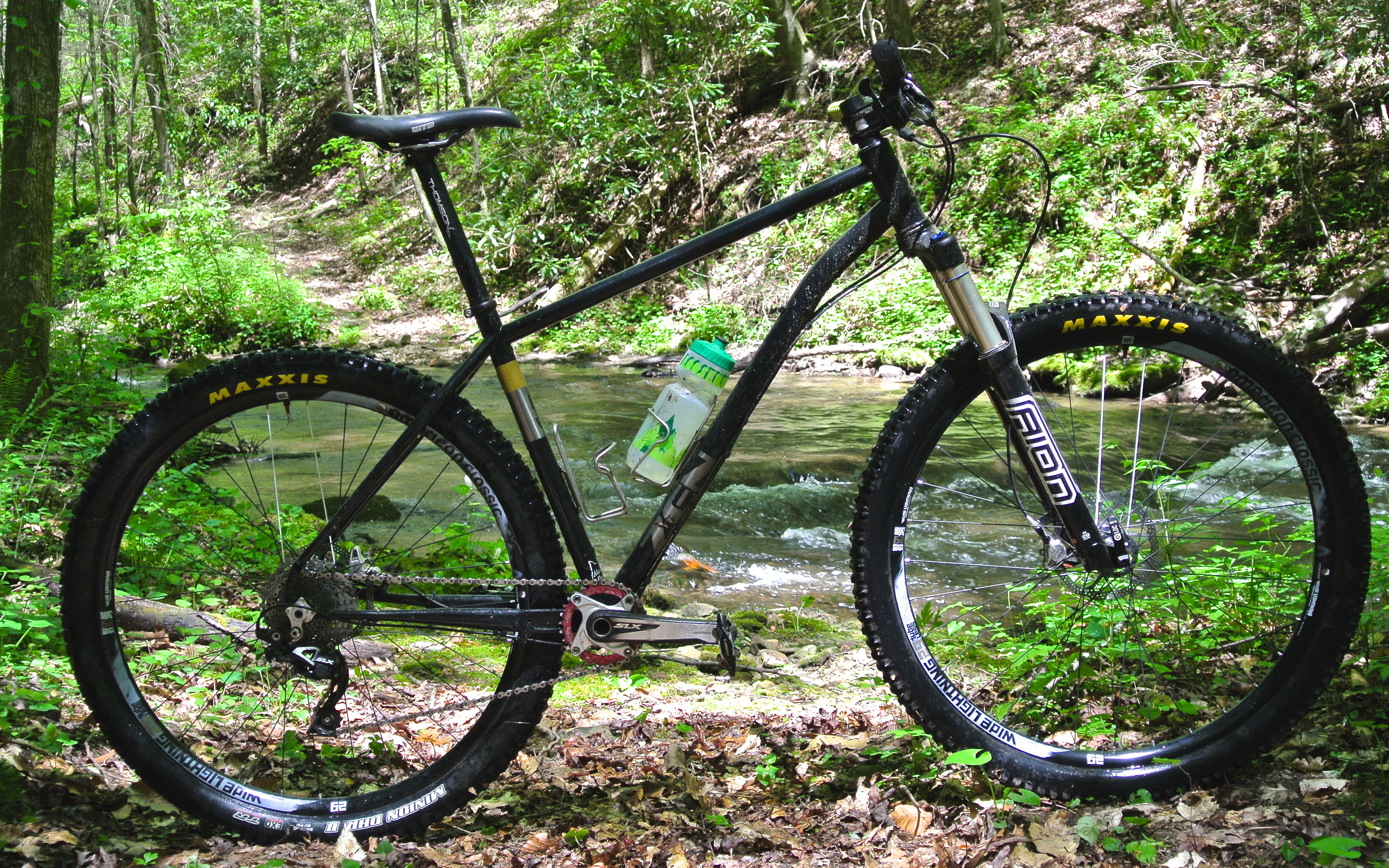
Handling
It’s designed around a 120mm travel fork, but I wanted to put a 140mm on it because, who doesn’t want more travel, right? Well, I talked to David from Zen, and he strongly encouraged me to stick with 120mm. I thought it would be too XC for my liking, but I was wrong. The head tube angle is right around 68 degrees, which is fairly slack for a hardtail, and the bike handles great.
With a wide bar and short stem, the bike whips around switchbacks–up and down–with ease. A lot of that maneuverability also comes from the ultra short chainstays, just 430mm / 16.9in. The Zen is extraordinarily nimble; pulling a wheelie is easier than any other 29er I’ve ridden. It loves hopping around the trail, finding the sniper lines and trail gaps.

Like any hardtail, the TRAIL has no problem scooting up the climbs. After riding lots of squishy bikes, it’s refreshing to have that immediate power transfer. However, on technical climbs, it does take more planning and body english to hump up and over obstacles than it would on a full suspension trail bike. Big wheels with meaty tires at the right pressure do go a long way towards helping in this regard, though. And remember, momentum is your friend.
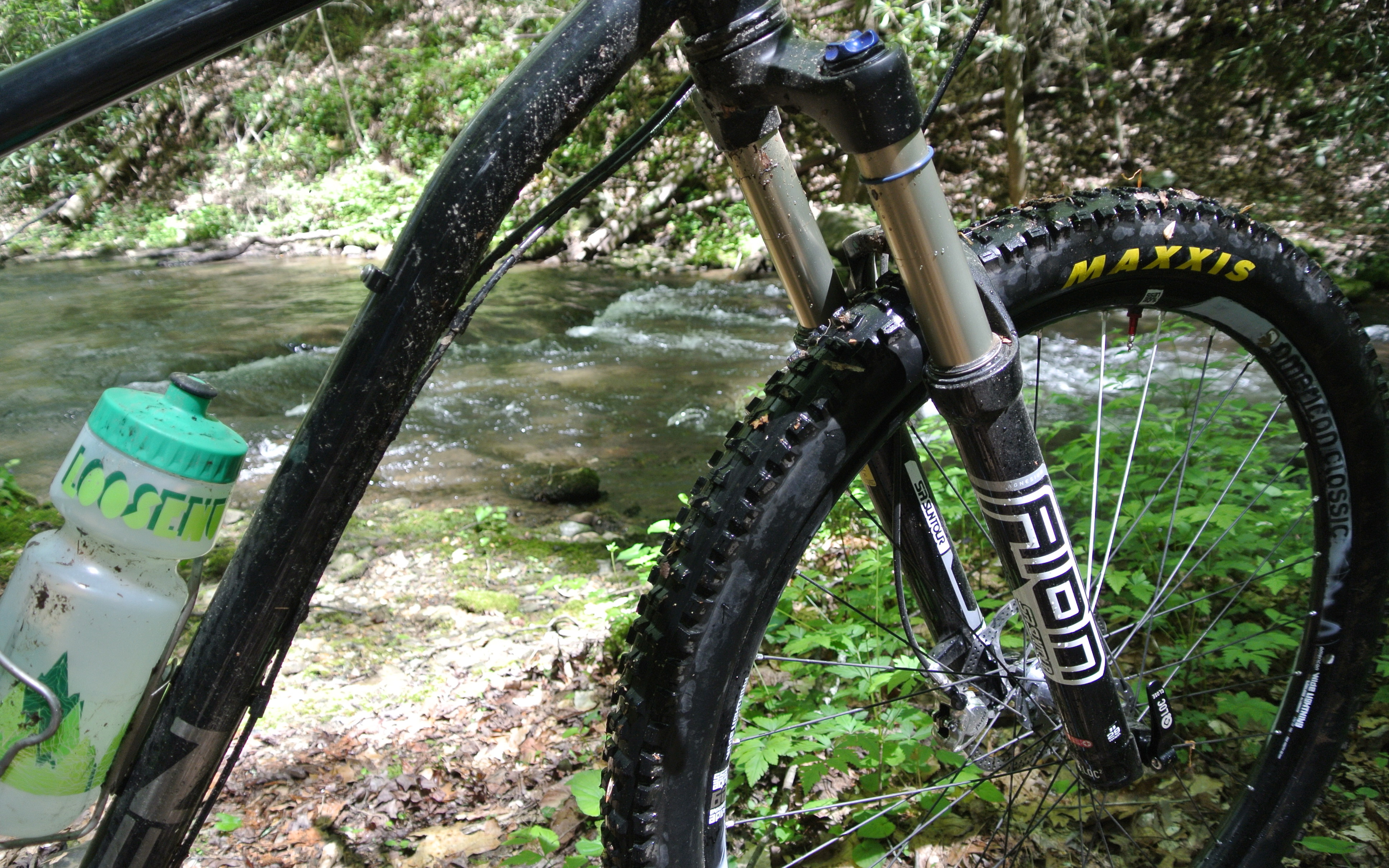
Even though the bike is nimble and easy to throw around, it feels planted on descents. Undoubtedly, that’s a result of the lengthy top tube and slack-ish front end. For a 120mm hardtail, the Zen TRAIL is way more capable than you’d expect. Having a beefy fork like the SR Suntour Aion helps to up the confidence factor as well.
If you want to stay low to the ground and squeeze all the speed you can out of the downhill, the TRAIL will oblige. Want to boost every little rise in sight? It’s just as happy doing that. I don’t think the Zen favors one riding style over another.
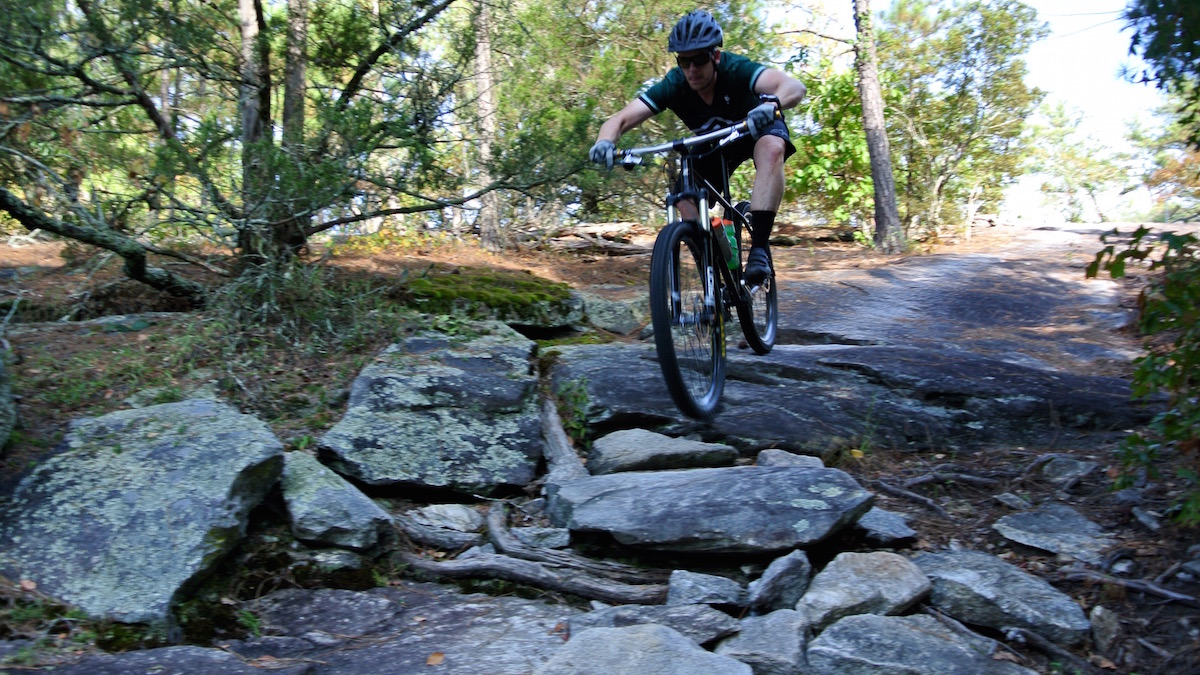
On a recent ride down the Bear Creek trail in Ellijay, GA, my buddy commented that he was having a hard time hanging with me on the descent… and he was on a 160mm travel full suspension with a dropper post. Part of that is because that descent is one of my favorites and I know it like the back of my hand, but it’s also due to the balanced nature of the Zen. Maybe that’s how the brand got its name?
Ride Quality
You’ve likely heard the “Steel is Real!” mantra chanted by hardtail lovers, but what does that mean? Sure, carbon fiber is just glorified plastic, but I can really ride a carbon fiber bike. It’s not theoretical. I’ve also ridden some great aluminum and titanium bikes, too.
There is, however, a certain ride quality unique to a well-made steel frame. And I’m going to go out on a limb here and say the Zen TRAIL has the best ride feel of any hardtail I’ve ever ridden. For real. No bullshit. Zen doesn’t even use some fancy-named tubeset from Reynolds or Columbus, either. It’s just good old chromoly steel. Steel, in this case, is real.
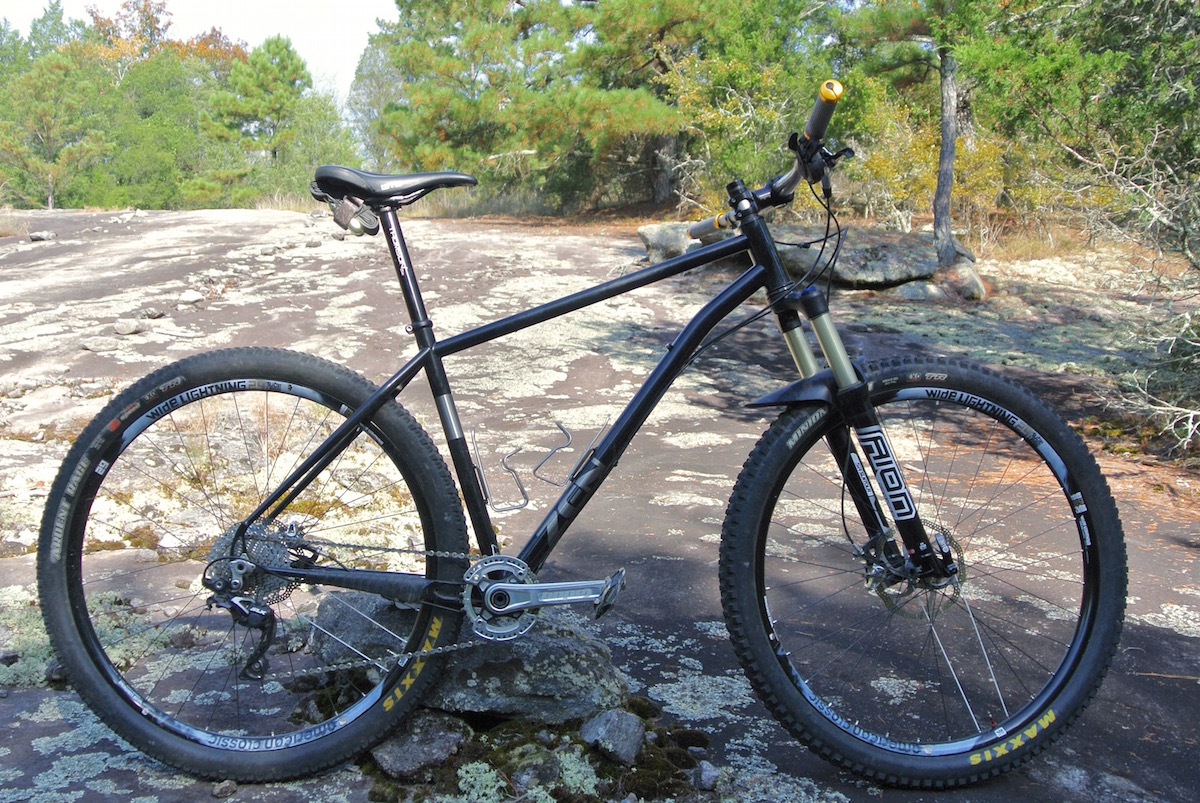
My most recent hardtail before the Zen was a Niner SIR 9, which uses a Reynolds 853 DZB (Double Zone Butting) tube set. That bike rode great, but the Zen is even better. It feels lively, springy, and takes the edge off all the little bumps out on the trail. Relatively speaking, the Niner had a firmer ride compared to the Zen.
The tubes on the TRAIL are thin–at least that’s what my finger-flicking test concluded–but the bike feels stout. I’m a big guy at 6′ and 205lbs, and ride a large frame. Even with those lengthy tubes, the frame felt plenty stiff sprinting or stuffing it into corners. I’ve given this bike as much punishment as I can dole out, and it’s shrugged it off. If the first several hundred miles are any indication, this bike is in it for the long haul.
Conclusions
Maybe it sounds like I’m gushing. Well, I am. The Zen TRAIL is flat out my favorite hardtail. Ever. And I’ve owned probably 10 hardtails of various materials and wheel sizes over the years. It’s also up there with my overall favorite bikes, full suspensions included.
Is the Zen TRAIL perfect? No, not quite. I’d say it’s about 90% of the way there. There are a couple small things that need to be tweaked. For instance, one of the hose guides for the rear brake is in a spot that makes it useless. I ended up just zip-tying the brake line to the chain stay instead.

Also, the finish could use more attention. What I thought were painted accents on the seat tube turned out to be decals. They got chewed up when I put the bike in the stand, so I peeled them off. I actually think the bike looks better without them. The dark green paint and portions of raw steel look utilitarian, like a tank. There is also a small spot of rust underneath part of the clear coat, but I don’t think it’s anything to worry about long term.

However, the single biggest change I would make to the Zen would be to add singlespeed compatibility. That could be done via a simple change of the dropouts during production. It’s such a versatile bike already, and singlespeeds are awesome, especially in winter, so why not? Do that, and the Zen is about as perfect as you can get. The fact that it’s made in America and rings in at a reasonable $1,399 for the frame doesn’t hurt, either.
Speaking of versatility, a set of Bike Bag Dude frame bags custom made for the Zen just arrived. With perfect fall camping weather just around the corner, we’ll see how the TRAIL fairs as a bikepacking rig. Stay tuned!
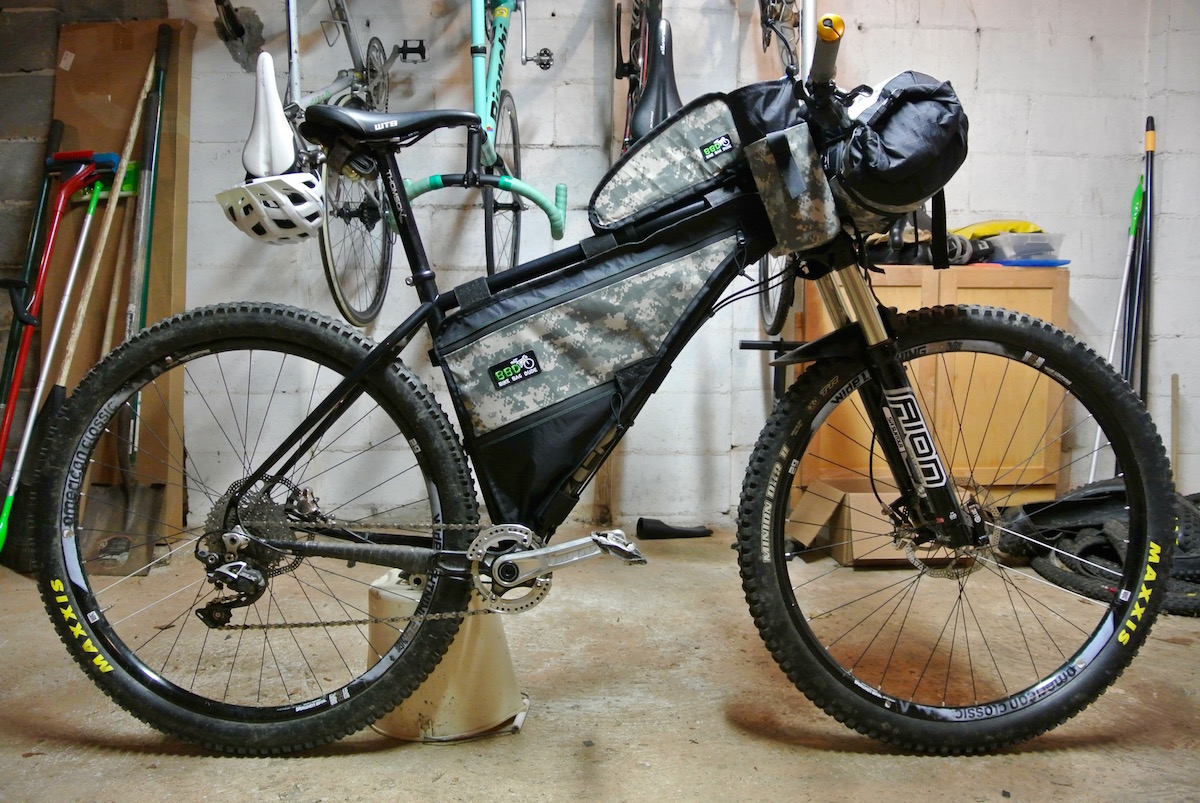
Thanks to Zen for providing the TRAIL frame for review!



















